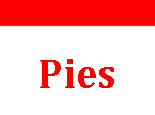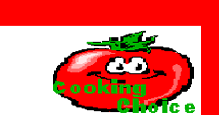|
METHODS OF PASTRY & PIE MAKING
Variety of different methods exist in preparing and
mixing the ingredients used in pastry making. Each method is producing
a different effect in the finished product. These methods are explained
in detail, so that the people interested in this subject will not have
any difficulty in producing splendid results. Familiarity with all of
them will insure success with it.
Pastry ingredients may be mixed by methods that differ from the methods we are going to learn here
and some of them will be mentioned lather. One of these is in the method
given later for the making of Easy Pie Pastry. This seems to be a complete reversal of the rules observed
in making pastry in the usual ways. The water is hot and the fat is melted
in it. The flour is added to the liquid and the fat instead of the liquid
being added to the flour and the fat. In spite of the fact that all this
appears to be contrary, the results obtained by this method are satisfactory.
Making Plain Pastry
The method employed in the making of plain pastry, such as is commonly
used for pies, consists in first mixing the shortening and the flour and
then adding the liquid.
Making Flakier Pastry
Another method is adopted for pastries that are intended to be somewhat
flakier and of a little better quality than plain pastry. In this method,
half of the fat is mixed with the flour and the water is then added to
the mixture. With this done, the dough that is formed is rolled out, the
remaining fat placed on it, and the pastry then folded and rolled repeatedly
in such a way as to incorporate all the fat.
Puff Pastry Method
This method is followed when puff paste or fancy pastry dishes are desired.
Only a very small quantity of fat is mixed with the flour or flour alone
is prepared. Water is then added and the mixture is kneaded until it becomes
smooth and elastic. When the kneading is done, the dough is rolled out
in a certain shape, the fat is placed on it, and, after it is folded over
the fat, it is put through a series of foldings and rollings until all
the fat is incorporated.
RELATED TOPICS:
 Making & Baking Pastry for Pies Making & Baking Pastry for Pies
 Recipes for Pastry Recipes for Pastry
 Baking Pastry for Pies Baking Pastry for Pies
 Utilizing Leftover Pastry Utilizing Leftover Pastry
|







